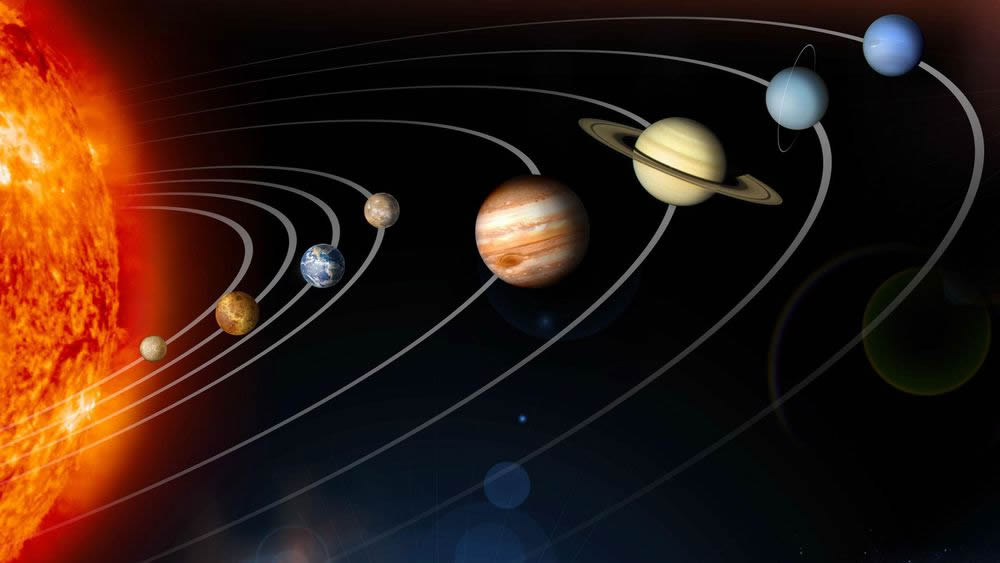While the planets may not affect us in ways astrologers would have us believe, events on Earth are undoubtedly influenced by the gravitational pull of our celestial neighbours and the results are rather more important than liaisons with tall dark strangers.
In a Nutshell
The push and pull of other planets, primarily Jupiter and Venus, alter the size, shape and orientation of the Earth’s orbit, while the axis of the Earth’s orbit swings around under the joint effect of the Sun and Moon.
Specific Effects on the Earth
Three of the above effects are especially important.
- First, the eccentricity of the Earth’s orbit – that is, its lack of perfect circularity- varies from almost 0 to 0.12 per cent over a period of 100,000 years.
- Second, the tilt of the Earth’s axis relative to its orbit also varies, from today’s value of around 23.5° to as little as 21.6° and as much as 24.5°, over a period of around 41,000 years.
- Finally, the timing of the Earth’s closest approach to the Sun is affected by the other planets, the Sun and the Moon.
Today, the Earth comes closest to the Sun in early January, when the northern hemisphere is tilted away from the Sun. However around 11,500 years from now, the Earth’s axis will have been pulled around, so that the northern hemisphere will be tilting towards the Sun when the planet make its closest approach, putting Christmas in the middle of the northern summer.
These variations in eccentricity, axial tilt, and precession of the Earth’s orbit are termed the Milankovitch cycle. Over thousands of years they collectively result in variations in the solar radiation reaching the Earth, and as we’ve already noted, they will have profound effects on the Earth’s climate.
Planet-induced Milankovitch cycles are now thought to play a role in the ebb and flow of the Ice Ages, and have recently been linked to the sudden change in the climate that led to the creation of the Sahara, around 5,500 years ago.
The (Current) Minimum & Maximum Distances Between Earth and the Other Planets
| Min Distance (km) | Max Distance (km) | Min Time (mins) | Max Time (mins) |
|---|---|---|---|
| Mercury | |||
| 77 million | 222 million | 4.3 | 12.3 |
| Venus | |||
| 38 million | 261 million | 2.1 | 14.5 |
| Mars | |||
| 55 million | 401 million | 3 | 22.3 |
| Jupiter | |||
| 365 million | 601 million | 20.3 | 33.4 |
| Saturn | |||
| 746 million | 1700 million | 41.4 | 94.4 |
| Uranus | |||
| 2580 million | 3160 million | 143.3 | 175.6 |
| Neptune | |||
| 2700 million | 2900 million | 150 | 161.1 |





